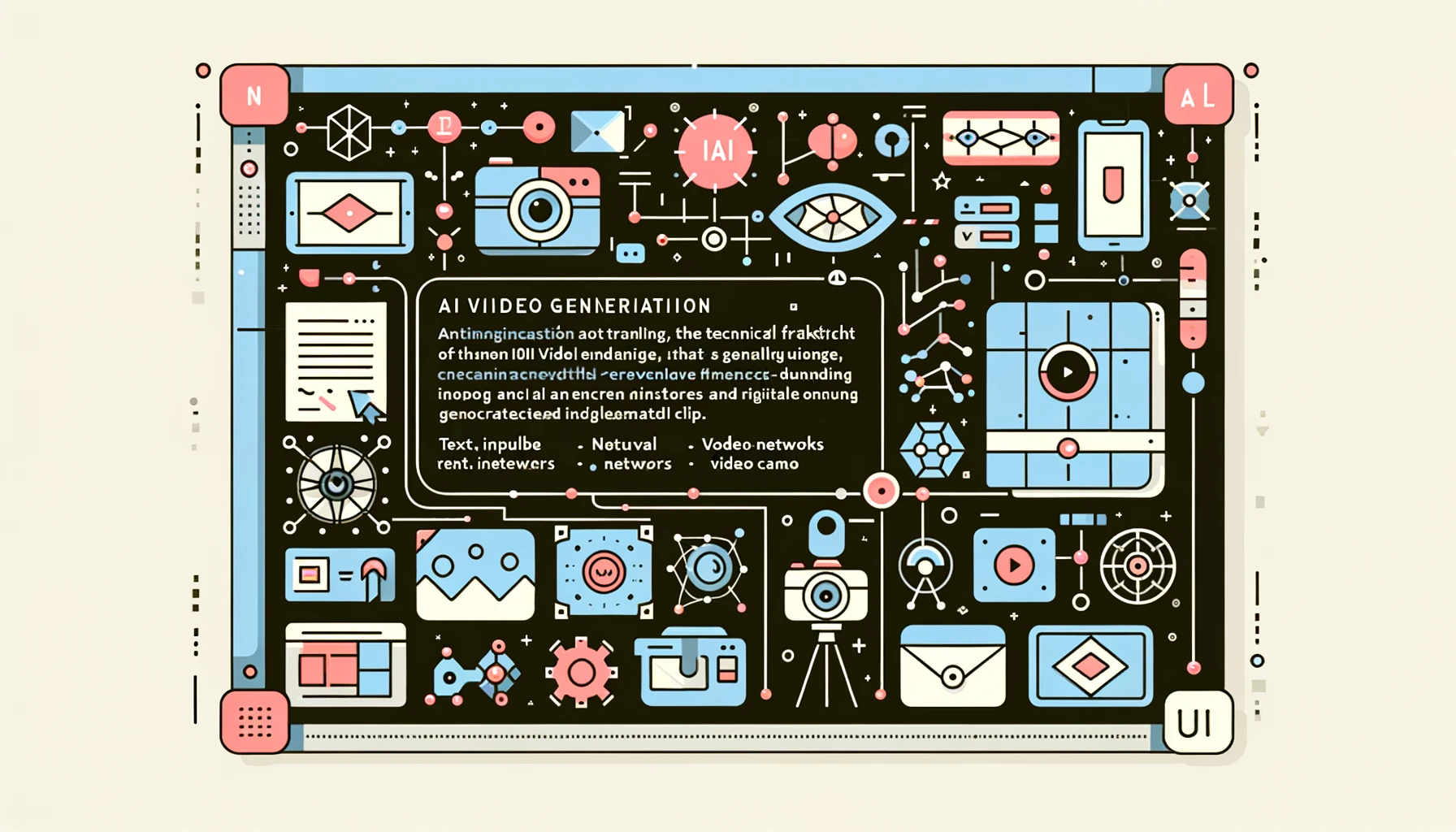The leap from static images to dynamic, coherent video content through artificial intelligence marks a significant milestone in the evolution of content creation technologies. This article delves into the technical framework underlying AI video generation, focusing on the processes and neural network architectures that enable this groundbreaking technology.
Data Preprocessing
The journey of generating a video from textual input begins with data preprocessing. This stage involves converting raw text into a format that AI models can understand and process. Natural Language Processing (or just NLP) techniques play a crucial role here. The text is tokenized, lemmatized, and encoded using models like BERT (Bidirectional Encoder Representations from Transformers) or GPT (Generative Pre-trained Transformer) to capture the semantic meaning and nuances of the input. This encoded text serves as a guide for the subsequent video generation process, laying the groundwork for what the video should depict.
Model Architecture
AI video generation relies on sophisticated neural network architectures capable of understanding text and translating it into dynamic visual content. Three primary types of neural networks are pivotal in this process:
- Convolutional Neural Networks (CNNs): These networks are adept at handling spatial hierarchies in images, making them ideal for generating individual frames. By analyzing patterns and textures, CNNs contribute to the creation of visually coherent frames based on textual descriptions.
- Recurrent Neural Networks (RNNs): RNNs, especially their more advanced variants like Long Short-Term Memory (LSTM) networks, are essential for managing the temporal aspects of video. They ensure that generated frames are not only individually coherent but also maintain continuity and flow when sequenced together.
- Transformer Models: Originally designed for NLP tasks, transformer models have been adapted to handle video generation. They excel in understanding the context and relationships within the input text and between video frames, facilitating the generation of complex scenes that evolve over time.
Feature Extraction
In the context of AI video generation, feature extraction involves identifying and understanding the elements described in the text that must be translated into visual components in the video. AI models dissect the input text to recognize characters, objects, actions, and settings. This comprehension is crucial for accurately depicting the narrative and visual elements specified by the textual input. Advanced techniques, including attention mechanisms within transformer models, allow the model to focus on relevant parts of the text when generating each frame. This ensure that important details are not missed.
Sequence Modeling
Sequence modeling is a critical step in ensuring the generated video is not just a collection of disjointed frames but a coherent sequence that tells a story or conveys a message. This involves predicting not only the immediate next frame based on the current frame and text but also understanding the overall narrative arc to maintain logical progression throughout the video. Techniques like RNNs and transformers are employed to model these temporal dependencies, enabling the generation of videos where actions and scenes flow naturally from one to the next.
Challenges and Innovations
Despite significant advancements, AI video generation faces challenges, including maintaining high resolution and realism over extended sequences, ensuring consistency in appearance and behavior of characters and objects across frames, and managing the computational complexity of generating video content. Innovations in model architecture, training techniques, and hardware acceleration continue to address these challenges, pushing the boundaries of what’s possible in AI-driven video creation.
Conclusion
The technical framework of AI video generation illustrates the complexity and ingenuity behind turning textual descriptions into vivid, coherent video content. Through the intricate interplay of data preprocessing, model architecture, feature extraction, and sequence modeling, AI technologies are unlocking new realms of creativity and storytelling. As these technologies evolve, we can anticipate a future where the creation of video content is limited only by the imagination of the content creators, with AI serving as a powerful tool to bring their visions to life.
Read related articles:

